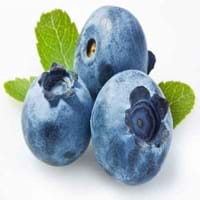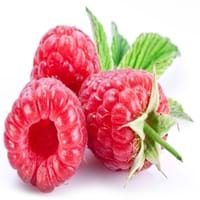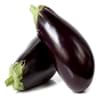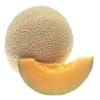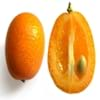Health Benefits
Anti depressant, Cancer prevention, Heart care, Increases metabolic rate, Prevents constipation
Cancer prevention, Heart care, Prevents macular degeneration, Reduces blood circulation problems
General Benefits
Anti oxidant properties, Controls blood pressure, Digestive aid, Eye care, Helps in weight loss, Strengthens bones
Anti-inflammatory properties, Controls blood sugar levels, Digestive aid, Eye care, Helps in weight loss
Skin Benefits
Anti-aging benefits, Reduces wrinkles, Skin rejuvenation, Skin revitalization, Treatment of acne, Treatment of dark spots
Anti-aging benefits, Brightens and lightens complexion
Hair Benefits
Promotes longer and healthier hair, Regulates hair growth
Acts as moisturizer, Regulates hair growth, Shiny hair
Allergy Symptoms
Abdominal pains, Anaphylaxis, Breathing difficulty, Coughing, Decrease in blood pressure, Diarrhea, Eczema, Fainting, Hives, Lightheadedness, Nausea, Runny nose, Sneezing, Swelling of mouth, tongue or lips, Vomiting, Wheezing
Breathing difficulty, Eczema, Hives, Itching, Nasal congestion, Runny nose, Sneezing, Watery eyes, Wheezing
Side Effects
Affects blood glucose levels, Decrease in blood sugar levels, Allergic reaction
Allergic reaction
Best Time to Eat
As a snack in the late afternoon, Eat the fresh ones, avoid mixing with any other foods, don't eat after meal., Morning time (before lunch)
Best if taken as a breakfast (or empty stomach), As a snack in the late afternoon, Don't eat after meal, Morning time (before lunch)
Vitamin B5 (Pantothenic Acid)
Vitamin C (Ascorbic Acid)
Vitamin K (Phyllochinone)
Phytosterol
Not Available
Calories in Fresh Fruit with Peel
Calories in Fresh Fruit without Peel
Not Available
Not Available
Varieties
Pink Lemonade, Bluecrop, Bluejay, Blueray, Bonus, Duke, Elliott, Jersey, Nelson, Northland, Patriot, Sierra, Spartan, Northcountry, Northsky and Premier and Climax
Amity, August Red, Boyne, Canby, Caroline, Comet, Dinkum, Dorman Red, Latham, Meeker, Black Hawk, Hayda, Lauren, Meeker and Latham
Color
Blue, Indigo
Black, Purple, Red, Yellow
Inside Color
Greyish-white
Pink
Origin
North America
Europe, North Asia
Soil Type
Porous, Well-drained
Sandy loam
Climatic Conditions
Cold
Cold
Facts about
- National blueberry month is July as blueberries are harvested in July.
- They are the official berries of Nova Scotia, Canada.
- Blueberries are used as natural food color and can protect you from memory loss.
- There are more than 200 varieties of raspberries.
- In USA, 90% of the raspberries are grown in Washington, California and Oregon.
- They do not ripe after they are picked.
- A raspberry contain 100 to 120 seeds.
Top Producer
United States of America
Russia
Other Countries
Canada, Germany, Netherlands, Poland
Azerbaijan, Canada, Mexico, Poland, Serbia, Spain, Ukraine, United Kingdom, United States of America
Top Importer
United States of America
United States of America
Top Exporter
Chile
Poland
Botanical Name
Vaccinium myrtillus
Rubus Idaeus
Synonym
Not Available
Not Available
Subkingdom
Tracheobionta
Tracheobionta
Division
Magnoliophyta
Magnoliophyta
Class
Magnoliopsida
Magnoliopsida
Subclass
Dillenhidae
Rosidae
Family
Ericaceae
Rosaceae
Species
V. myrtillus
R. idaeus
Compare Blueberry and Raspberry
It is important compare Blueberry and Raspberry as both the fruits have a different nutritional value. Their comparison can be done on the basis of their vitamin and mineral content, calories, benefits as well as characteristics, making it easier for us to choose the best fruit for our diet. Their general health benefits are as follows:
Blueberry Benefits: anti oxidant properties, controls blood pressure, digestive aid, eye care, helps in weight loss and strengthens bones.
Raspberry Benefits: anti-inflammatory properties, controls blood sugar levels, digestive aid, eye care and helps in weight loss.
Fruits are also used as a remedy for various hair problems. The hair benefits of Blueberry are: promotes longer and healthier hair and regulates hair growth and hair benefits of Raspberry are: acts as moisturizer, regulates hair growth and shiny hair. Some fruits are known to cause allergic reactions. The allergy symptoms of first fruit are: abdominal pains, anaphylaxis, breathing difficulty, coughing, decrease in blood pressure, diarrhea, eczema, fainting, hives, lightheadedness, nausea, runny nose, sneezing, swelling of mouth, tongue or lips, vomiting and wheezing and the symptoms of second fruit are: breathing difficulty, eczema, hives, itching, nasal congestion, runny nose, sneezing, watery eyes and wheezing. Get sorted Blueberry vs Raspberry comparison with the help of fruit comparison tool by fruitvs.com.
